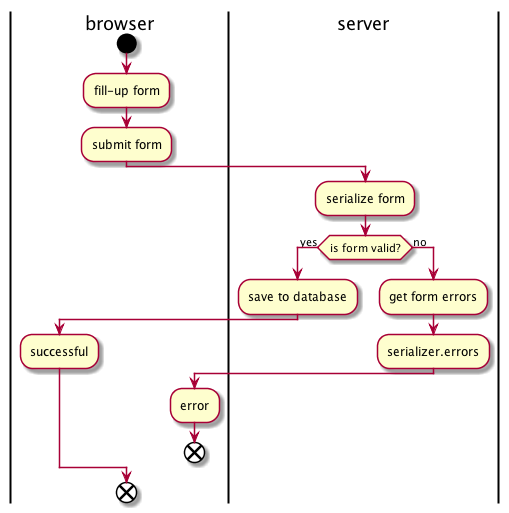Django REST Framework
Article aims to support the official guide, by providing clearer explanation of parts that is still confusing even after going through the guide.
The tutorial covers the following:
- Serialization
- Class based views
- Authentication & Permissions
- Relationships & hyperlinked APIs
- Viewsets & Routers
Serialization
Serializer transforms request parameter to model or vice versa. A typical flow would look like this

Serializers can do the following:
- Transform model to form
- Validate form
- Save form to database creating a model in the process
Serialization has the most documentation in the Django REST Framework. It’s important to be familiarize with the technique.
Class based views
A url/resource can be assigned to a class, you will be defining how each HTTP method will be handled. Inside the class you need to implement get, post, put, patch, delete methods.
Class based views is the building block for ViewSets, a higher abstraction of Django REST framework.
Authentication
Authentication in Django REST works by intercepting the request then passing it to all the authentication backend. If one succeed then request.user and request.auth is populated. request.auth is the authentication backend used, Eg. facebook, google or Django itself.
Permissions
After authenticating the user, this check if request.user has the rights to access the resource being requested.
Relationships & hyperlinked APIs
Used to improve cohesion and discoverability. Few API have these, if you can implement this then you have a good RESTful interface.
Viewsets
It implements standard way for performing CRUD to the model. It will generate two resource namely List and Detail. List resource will be responsible for create model and retrive list of record. While Detail resource for retrieve, update, delete single record.